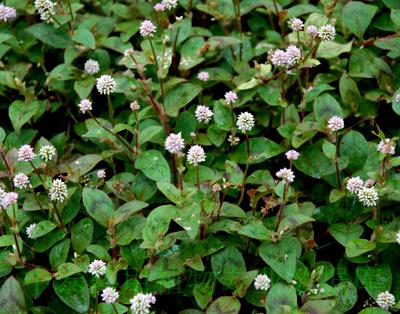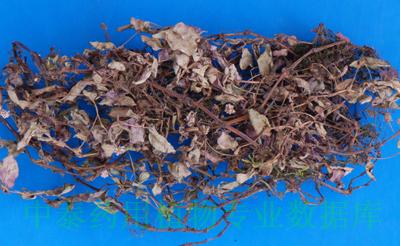| [English Name] | Capitate Knotweed Herb | |
| [Chinese Name] | 头花蓼 | |
| [Pinying Name] | Touhualiao | |
| [Latin Name] | Polygoni Capitati Herba | |
| [Genera] | Polygonaceae | |
| [Efficacy] | Damp-clearing drug | |
| [Pictures] | Plant picture | Drug picture |

|

|
|
| [Alias] | ||
| [Source] | ||
| [Plant morphology] | ||
| [Distribution] | ||
| [Gathering and processing] | ||
| [Characteristics] | ||
| [Ecology] | It grows in forest、road side、stream side、rocky mountain side、bushes beside river and so on. | |
| [Chemical composition] | ||
| [Pharmacological activities] |
1. Antibiosis: Water extract can inhibit colibacillary growth in vivo and vitro[1]. It can inhibit micrococcus gonorrhoeae growth also[2]. 2. Relieve Fever: Water extract can decrease body temperature raised by bacterium typhosum but without effect on normal rabbit[1]. 3. Antiinflammatory: Capitate Knotweed Herb can relieve swelling of auricle induced by xylene on mice model[3]. |
|
| [Clinical trial] | ||
| [Properties] | ||
| [Medical and other Uses] | ||
| [Dosage] | ||
| [Cautions] | ||
| [Traditional usage] | ||
| [Toxicological studies] | ||
| [Pharmaceutical preparations] | ||
| [References] |
Pharmacologic Actions: [1] Ren Guangyou, Chang Fenggang, Lu Sulin, et al. [2] Xu Yingchun, Zhang Xiaojiang, Xie Xiuli, et al. Journal of Clinical Urology, 2001,16 (6):287. [3] Liu Ming, Luo Chunli, Zhang Yongping, et al. Guizhou Medical Journal,2007,31 (4):370. |
|